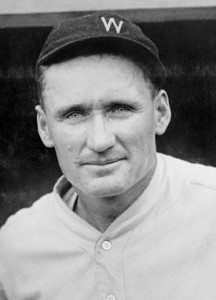Innings Limits
I knew for a FACT as soon as I got a new picture and log-in at the Headrush I would stop writing. It’s crazy, but it is the truth. I could just feel it coming.
Oh well.
First, as a graduate of the Moore School of Business at the University of South Carolina, I have to give a shout out to Darla Moore for being one of the first two female members at Augusta.
The MLB news circuits are going crazy over the imposed innings limit the Washington Nationals have placed on star pitcher Stephen Strasburg – rumored to be in the 160 to 180 inning range. As such there have been outcries and sympathetic voices alike making their opinions known on the subject. Most recently Chipper Jones weighed in, stating that there are only so many chances in the game to win a World Series, and that he had been to the playoffs 12 years and only come away with one. The Braves famed playoff futility aside, maybe the Nationals should gamble and pitch their young phenom into the proverbial ground. The real question for me is, when did the ground rise up to a measly 160 innings pitched, when pitchers of old routinely averaged well over 300 and sometimes 400 innings each season?
 Over a 21 year career Walter Johnson averaged 281 innings pitched per year. This includes an 11 year stretch, from 1909 to 1919, where he average 338 innings pitched per year – failing to reach 300 just twice (296 in 1909 & 290 in 1919). And he did not even lead the league in innings pitched 6 of those seasons. Stephen Strasburg is 24 right now, and is currently 15-5 with an ERA of 2.85, and 183 K’s over 145.1 innings – without a doubt one of the best pitchers in the game. For comparison, however, when Walter Johnson was 24 he compiled a record of 33-12 with an ERA of 1.39, and 303 K’s over 369 innings! Cy Young when he was 24? Try 432 innings pitched.
Over a 21 year career Walter Johnson averaged 281 innings pitched per year. This includes an 11 year stretch, from 1909 to 1919, where he average 338 innings pitched per year – failing to reach 300 just twice (296 in 1909 & 290 in 1919). And he did not even lead the league in innings pitched 6 of those seasons. Stephen Strasburg is 24 right now, and is currently 15-5 with an ERA of 2.85, and 183 K’s over 145.1 innings – without a doubt one of the best pitchers in the game. For comparison, however, when Walter Johnson was 24 he compiled a record of 33-12 with an ERA of 1.39, and 303 K’s over 369 innings! Cy Young when he was 24? Try 432 innings pitched.
That many innings these days is crazy talk. Men just can’t seem to keep their arms healthy long enough. But why is that the case? One would think with all the improvements in sports medicine, all our improved knowledge of human physiology, and of course, steroids, that pitchers would actually last longer today than years past. Unequivocally, this is not the case.
Of course, going to four and then five man rotations has limited a pitcher’s ability to obtain these Herculean feats. But even if a pitcher could pitch every other day, what manager is going to go for that? They would be run out of town on a pumpkin wagon.
What it boils down to I suppose is that when hitters starting hitting more homeruns, pitchers decided to start throwing harder. This pulled the tendons, snapped the cords, and generally wore down arms. Take into account added bullpen calls, more relief pitchers, and faster pitch speeds, and it all adds up to generally lower acceptable pitch counts.
One can’t help imagine what the older pitchers would think of these new regulations. In 1920, Leon Cadore of the Brooklyn Robins and Joe Oeschger of the Boston Braves faced off in a 26 inning affair. Each pitched complete games – about 16% of the total innings Strasburg is limited to this year, assuming the 160 inning limit. (14% if assuming the 180 pitch limit.)
Personally, I say let the kid decide his fate. If his feels his surgically repaired arm is up to the task, then he should have the right to try to win it all. One thing is for sure, the issue will be debated a million times over in the next few weeks.
Comments?
2 Comments
I agree with you there – comparing is difficult. But you have to factor in the advances in technology on the other side as well. Sure they were playing against barbers, teachers, and chemists (ok, maybe not chemists), but they also probably did not ice down their arms, have access to trainers, or watch hours of film on opponents.
It’s so hard to accurately compare the records and stats from the early 1900’s era. Half the people on the rosters had other full-time jobs.
With that being said, I say let him pitch.